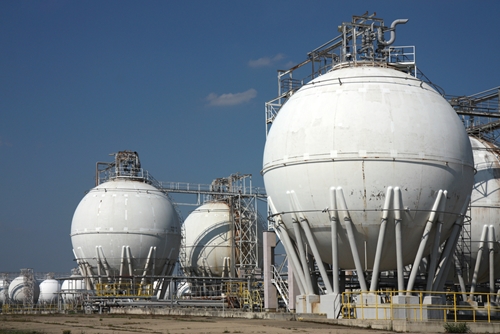
A Honolulu-based petroleum company is paying $650,000 in fines to the U.S. Environmental Protection Agency for violations of the Clean Air and Clean Water acts.
The Hawaiian company failed to install vapor controls that met EPA emission limits on its fuel storage terminals. Additionally, the company did not have adequate secondary spill containment for its fuel storage facilities. As part of its agreement with the EPA, the company will be be upgrading its spill containment measures at its facilities statewide at an estimated cost of $3.25 million.
Operations were shut down at one of the company's terminals and cannot be resumed until volatile organic compound vapor controls are installed and oil spill containment is improved, which will cost an estimated $900,000, according to the EPA.
The Clean Air Act requires vapor controls be installed on loading racks to limit VOC emissions, including benzene, an organic compound found in gasoline and classified as a carcinogen by the U.S. Department of Health and Human Services. The Honolulu-based company also violated Clean Water Act regulations, which require fuel storage facilities to have spill prevention to protect wetlands, streams, oceans, coral reefs and marine life.
Increase EPA regulation
As PennEnergy reported, the EPA has issued several new regulations for hydrocarbon production and storage facilities in recent years, in part due to the large scale of emissions leaks and ensuing pollution. As the publication reported, an estimated 26 billion cubic feet of methane escapes from storage tanks each year, in addition to carbon dioxide.
"An estimated 26 billion cubic feet of methane escapes from storage tanks each year."
The EPA first announced its New Source Performance Standards in 2012 as part of the Obama administration's Climate Action Plan, designed to reduce greenhouse gas and volatile organic compounds emissions from the oil and natural gas industry. According to the EPA, the industry is the largest industrial source of VOCs, capable of emitting an estimated 2.2 million tons a year.
In August 2015, the EPA updated the standard in an effort to reach the President's goal of a 40 to 45 percent reduction in oil and gas industry's methane emissions from 2012 levels by 2025. The EPA amended the NSPS to include regulation of equipment and emissions sources not previously covered by the NSPS hydraulically fractured oil wells and "downstream" covering equipment used in the natural gas transmission segment. The EPA estimated the new regulations would decrease methane emissions by 400,000 tons.
New technology improves compliance
The increased federal regulations have led to the development of new technologies designed to increase compliance, worker health and safety and environmental protections, including vapor recovery units. These ventilation units capture the emissions and separate the usable natural gas, which can then be sold by the company allowing for increased revenue in addition to improved environmental controls.
"VRUs are capable of capturing 95 percent of hydrocarbon emissions that build up in storage tanks."
A report from the EPA found VRUs are capable of capturing 95 percent of hydrocarbon emissions that build up in storage tanks. Once collected, these vapors can then be sold or used onsite. The organization estimates between 7,000 and 9,000 VRUs are currently in use in the oil production sector.
According to the EPA, companies with fixed roof storage tanks should measure the volume of vapor emissions in their tanks in order to install the correctly sized VRUs. The amount of emissions present in a tank will be controlled by several factors including operating pressure, the pressure in the tank, oil composition and ambient temperatures, all of which should be measured before installing the VRU. The EPA advised a general principle for sizing a VRU is to double the average daily volume of the tank, which should give an estimate of the maximum emissions rate.
VRUs will be effective in reducing methane emissions in all tanks, and depending on the value of the recovered emissions can be very cost effective, the EPA found. If natural gas liquids can be stripped from the vapors, these can be piped to processing plants and sold, helping to offset the cost of the VRU.








